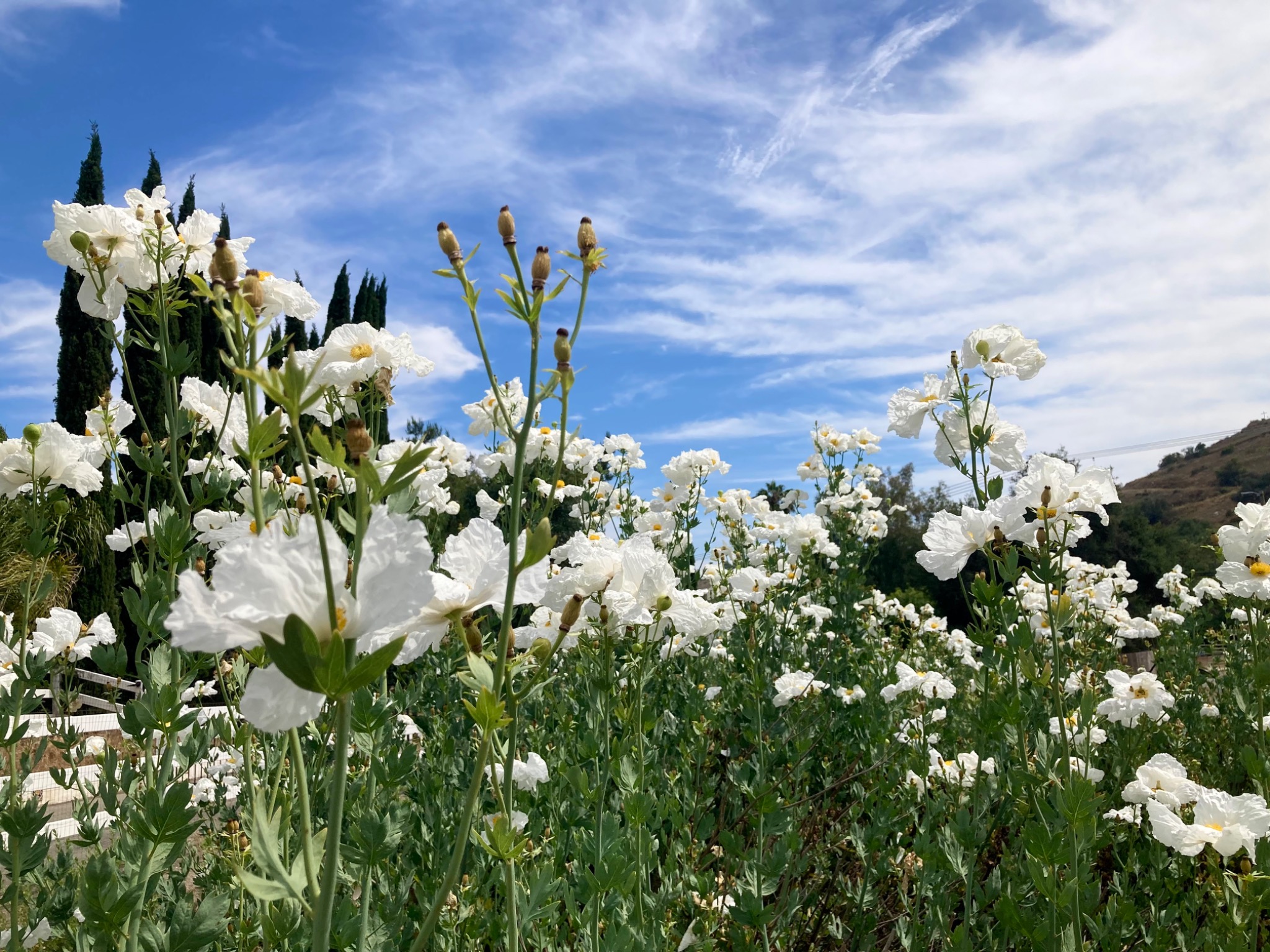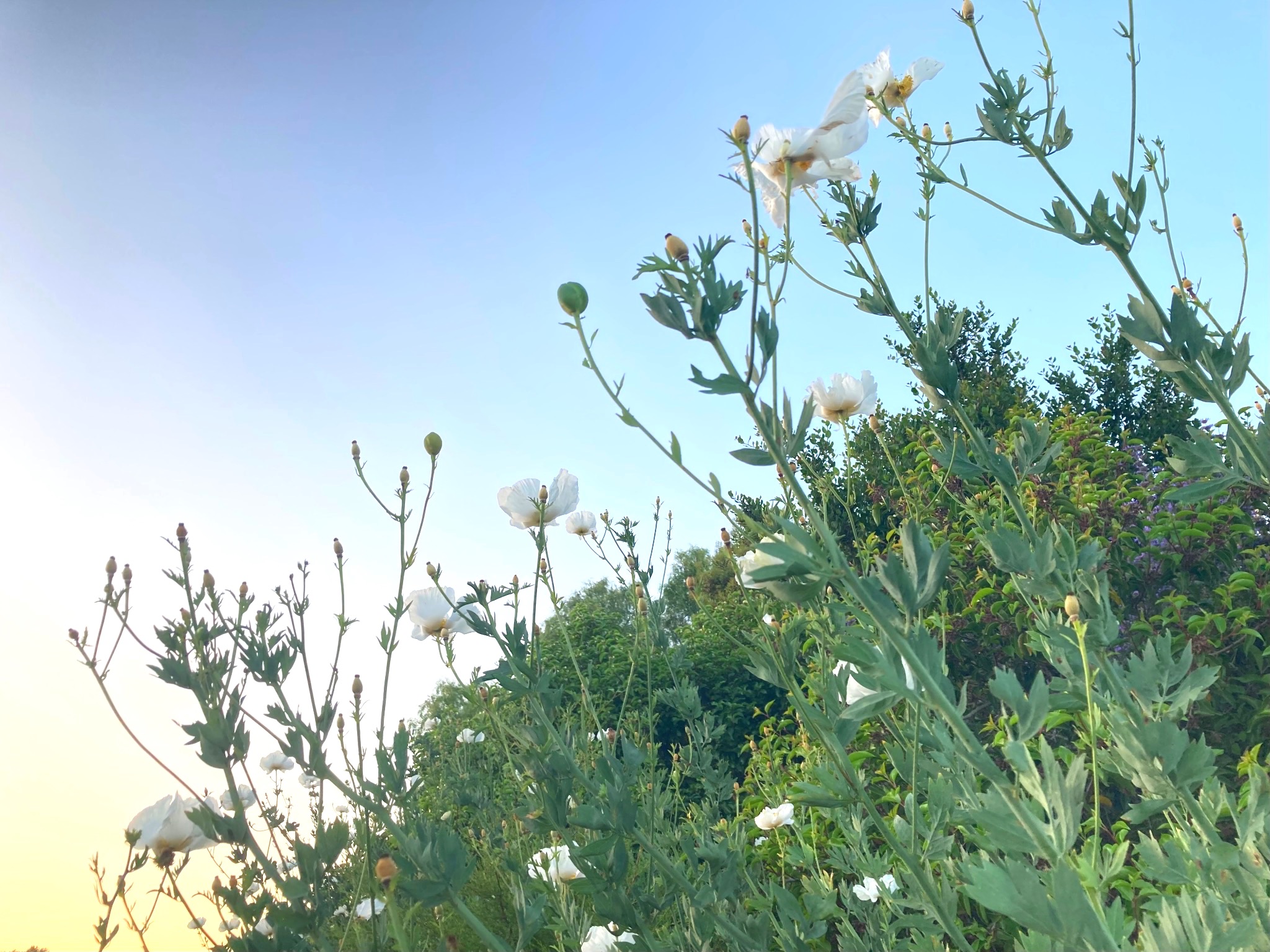
The Matilija poppy: plant them in the fall
The Matilija poppy (Romneya coulteri) is a California native plant. The drought-tolerant species is unique to California natives for its large blossom and distinctive appearance. Its blooms are the largest of any native California plant, some measuring up to eight inches across. The bright white and yellow poppy is perennial and tends to spread into fields once it is mature. It buds in the spring and blooms in early summer. The Matilija poppy was a top contender for the California state flower. In contrast with the famous, bright orange species, the Matilija poppy is a tall shrub that can grow eight feet high and eight feet wide hosting a sea of delicate crinkly-white petaled flowers.
The Matilija poppy is named after a great Chumash warrior. Chief Matilija led the Chumash tribe, the first-known Southern Californians. He is said to have lived in what is now Ventura County. A native creation mythology attends the flower, telling the tragic story of Amatil, the daughter of Chief Matilija.
Its scientific name derives from the two scientists who identified the species in the 1830s. Dr. Thomas Coulter (1793-1843) was an Irish botanist who discovered the Colorado Desert. He discovered the Matilija poppy (Romneya coulteri), also called Coulter's Matilija Poppy, in 1831. The genus derives from the name of an Irish astronomer and friend of Dr. Coulter, Dr. Thomas Romney Robinson (1792-1882).
Growing the Matilija Poppy

This plant has become a popular choice in drought-tolerant gardens. It spreads by trailing roots, and is considered invasive in places it finds ideal. Once it takes root in an ideal place, full sun and a soil it thrives in, preferably well-draining, gravel-like soil, it will take over. In the wild, seeds will only germinate after being singed by fire, similar to many native California plant species.
It is considered so invasive that some gardeners suggest planting it in a contained planter to avoid root-spread throughout the yard. Another gardener tip is to plant it in the fall so it can benefit from the winter rainy season. Additionally, after the bush turns brown in the summer, it should be cut all the way back.
While this plant has a reputation for being invasive, it is also known as being difficult to establish. It is somewhat finicky, needing the ideal environment. Also, they do not transplant well due to the root system which is made up of rhizome runners. In nature, they are found in full-sun chaparral and among coastal sage, or along streams and roadside slopes.
This plant attracts bees, caterpillars and butterflies. Butterflies and bees are drawn to the poppy's large blossoms.
The Matilija poppy is identified for its use medicinally. It contains antimicrobial attributes and is used for skincare. Most commonly, it is used for gum, skin and stomach issues. The medicinal properties are harvested from the plant's sap which is known to have been used by native Chumash people. As a native, the plant adapted the sap to survive in the wild. The sap has another benefit for gardens, namely, it makes the plant resistant to grazing damage by deer and other animals.
Post a comment